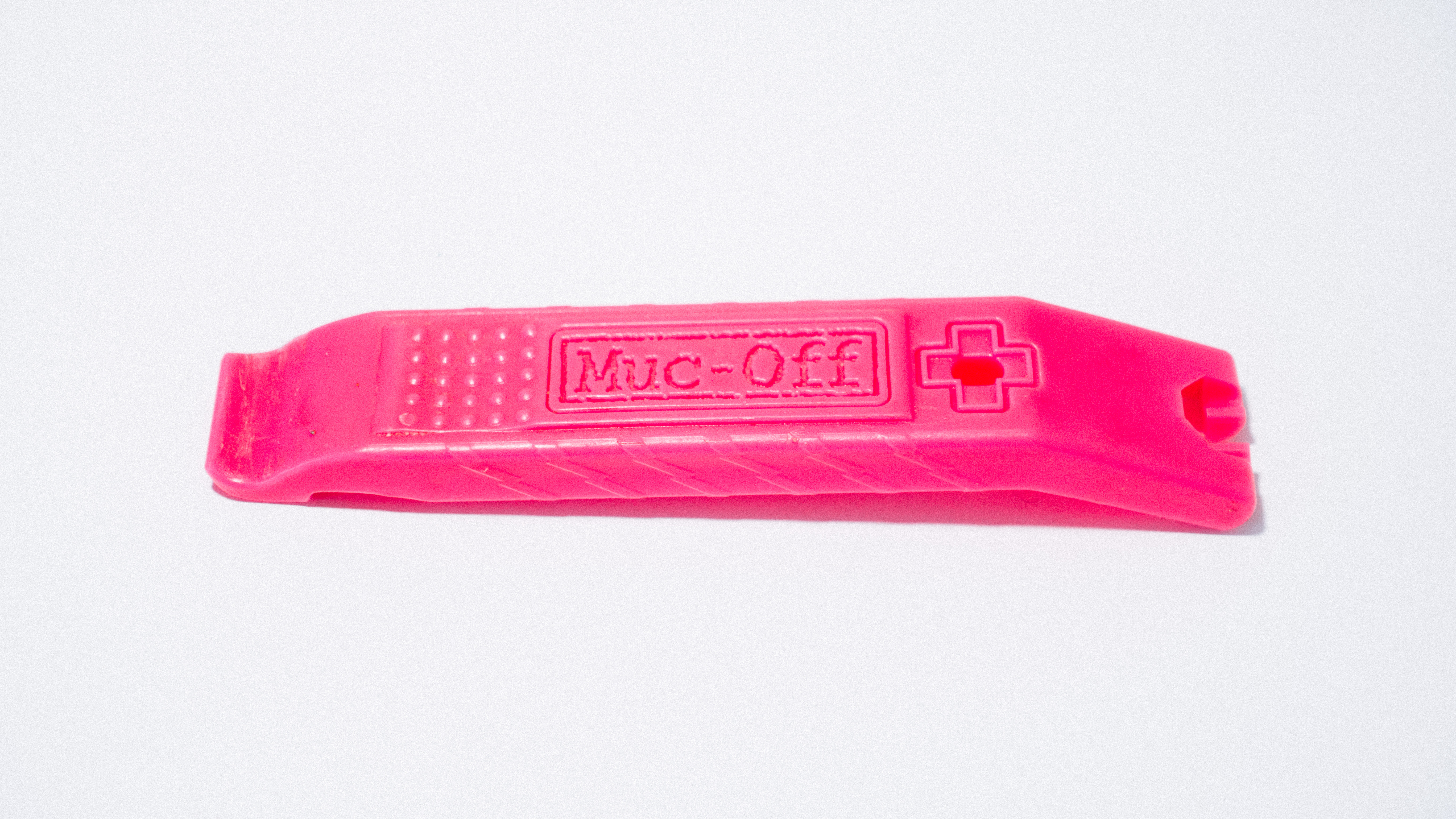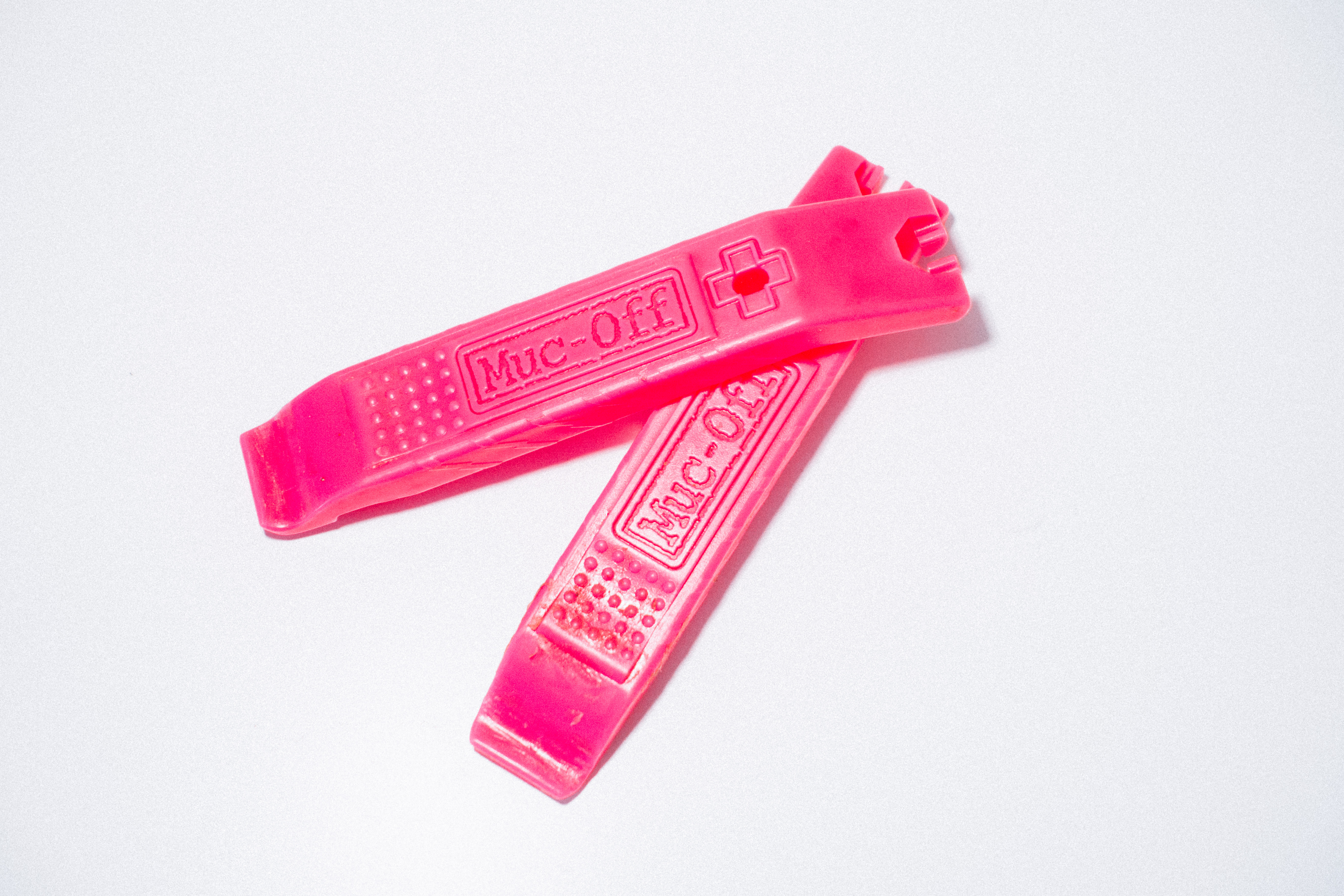Best tyre levers: One product is so good, we've not bothered including the rest
After testing out various other tyre lever options, nothing comes close to the Muc-Off Rim Stix

Here at Cyclingnews we pride ourselves on giving honest, objective buying advice. All of our buyer's guides are thoroughly researched and all the products are tested, and we try our absolute best to find products that fulfil specific purposes, price points, or other specifics. This often means guides with multiple product recommendations; not here though. If you want the best tyre levers, buy the Muc-Off Rim Stix.
I originally wrote this guide over a year ago and tested out a slew of options. Shop-spec levers from Pedros, premium Silca ones, and other models from Unior, Park Tool, and SKS. All of them were decent, but they all had their drawbacks, and I managed to snap all of them at some point while fitting tyres, with the exception of some metal ones from Park Tool that risk scratching your rim and weighing a fair bit more.
I'm yet to find a drawback to the Muc-Off Rim Stix. They're strong to the point I've never even come close to snapping them, they're plastic so they won't scratch your rims if you slip, they're long enough to provide ample leverage, and they include a valve core remover too. What's more, they're cheap too, and readily available. The only possible drawback is the size, but they've never troubled my jersey pockets, and I'd much rather sacrifice a small amount of space for a lever I know I can trust, especially now tricky tubeless tyres are the norm.
Basically, I can't in all good conscience recommend you buy anything else; it would simply be a waste of your money.
Best tyre levers
Muc-Off Rim Stix
Specifications
Reasons to buy
Reasons to avoid
What are you getting for around a single crisp £5 note or dollar equivalent? Well, the levers themselves are 12cm x 2cm x 1cm and are more or less solid, save for the hollowed-out, kinked end designed to hook onto the spokes. It's this solidity that bestows the strength necessary to get even the most stubborn tyres onto the ever-so-slightly largest of rims (I'm looking at you, GP5000 x DT Swiss).
Below the spoke hooks at the very top you have a rectangular hole with rounded edges that'll tighten or remove a valve core should you ever have the need. While most of us will pour the sealant directly into the tyre prior to fitting, with tight road tyres it's often easier, and cleaner, to squirt tubeless sealant through the valve.
Also, sometimes even the best bike pumps (the ones that screw onto the valve) can have a habit of unscrewing your valves, dumping all the air out in one go when you remove them. It's one of those features that you never need until you do, and then it's an absolute disaster if you don't have one.
At the business end of each Rim Stix lever, the chisel tip tapers to a noticeably more pointy end than something like a Pedros lever, which means they get under the bead much more easily when the time comes to take the tyre off the rim again.
Finally, the backside near the tip features a little ridge, designed to lock into place on the edge of the rim, meaning it's much more of a rarity that they fly off.
How to choose the best tyre levers for you
Do you need tyre levers?
Yes. They're one of the cheapest tools you can buy as a home mechanic, and without them, you could be left stranded by the roadside unable to fix a puncture.
They should come with you on every ride, along with a pump or CO2 inflator, and some way to fix a flat tyre (either a tubeless repair kit, spare tube or patches).
It is sometimes possible to remove a tyre from its rim - and then get it back on again - without a set of tyre levers, but imagine you choose to save yourself a few pounds/dollars and take that risk, and then are forced to pay for an expensive taxi home because you couldn't. It's really not worth it.
What can I use instead of tyre levers?
In a pinch, a large flathead screwdriver will do the job, but you risk damaging your rims, tyres, and innertubes by using one. Tyre levers are designed with round edges and are either made entirely of plastic or are metal surrounded in plastic to avoid damaging anything during their use.
Can you use tyre levers on carbon wheels?
Yes, and while none of the levers I originally tested are forbidden from being used on carbon rims, you do run a greater risk of scratching. The Rim Stix are plastic though, so it's not a worry.
Should you use metal tyre levers?
Provided they're covered in a protective coating, as some options from Silca and Park are, there is nothing to suggest you shouldn't use metal tyre levers. Park Tool even makes a heavy-duty, all-metal set (the TL-5) for super stubborn tyres, so if it's a tool designed for a job then you needn't worry.
The main aim of using a metal tyre lever is increased strength, but I'm yet to find a rim and tyre combo that the plastic Rim Stix can't handle, and given I've been testing both wheels and tyres this year, I've tried a lot.
What are the hooks on tyre levers for?
Most tyres need two levers to get them on and off, and sometimes you need two hands for a single lever. The hooks on tyre levers allow the lever to hook behind and onto the spokes of the wheel, holding them in place and freeing up a hand.
Is this article paid-for by Muc-Off?
I'm preempting the inevitable question, here, and the answer is no. Muc Off didn't pay us a penny we just really like the tyre levers.
Cyclingnews earns commission from the affiliate links included in our buying guides, so if you click through to Amazon or Competitive Cyclist and make a purchase, we get a small kickback. That's the case with ANY product we include, so there's no reason for us to favour one over another.
The products we do choose to include - be that one or 25 - are chosen purely based on our own impartial testing.
Per our sponsored content guidelines and good old editorial integrity, buyer's guides (and reviews, for that matter) are exempt from any paid collaboration.
How do we test tyre levers?
Here at Cyclingnews, we've been through countless sets of tyre levers. We've bent and snapped them, cursed at the bad ones in the cold and felt the satisfying glow of getting a tyre onto or off a rim without them.
For my initial testing, I used the same tyre and rim combo in the same weather conditions so expansion and contraction of the bead and rim didn't affect the results. In short, it meant an afternoon taking the same tyre on and off and on and off and seeing how each lever performed in terms of its ability to remove and replace a tyre, but also how well it protects the components, and how well it protects the hands too. Following on from that though there's been a tonne of general usage as I swap tyres for other product testing, and the levers I always reach for, and take out with me while riding, are the Muc-Off Rim Stix.
Testing is the backbone of the tech department at Cyclingnews and how we test is taken seriously, so read on to find out more.
The latest race content, interviews, features, reviews and expert buying guides, direct to your inbox!

Will joined the Cyclingnews team as a reviews writer in 2022, having previously written for Cyclist, BikeRadar and Advntr. He’s tried his hand at most cycling disciplines, from the standard mix of road, gravel, and mountain bike, to the more unusual like bike polo and tracklocross. He’s made his own bike frames, covered tech news from the biggest races on the planet, and published countless premium galleries thanks to his excellent photographic eye. Also, given he doesn’t ever ride indoors he’s become a real expert on foul-weather riding gear. His collection of bikes is a real smorgasbord, with everything from vintage-style steel tourers through to superlight flat bar hill climb machines.

